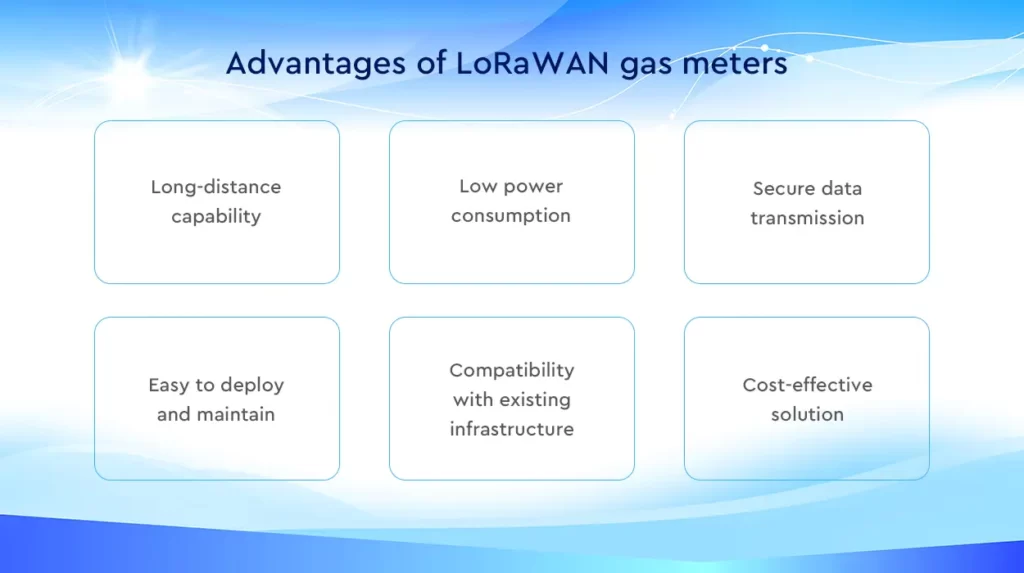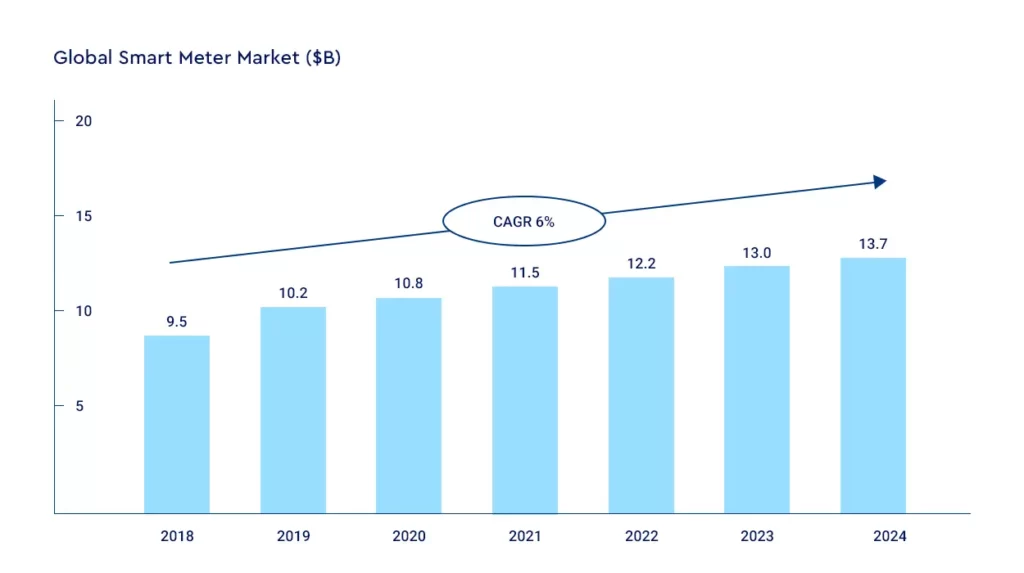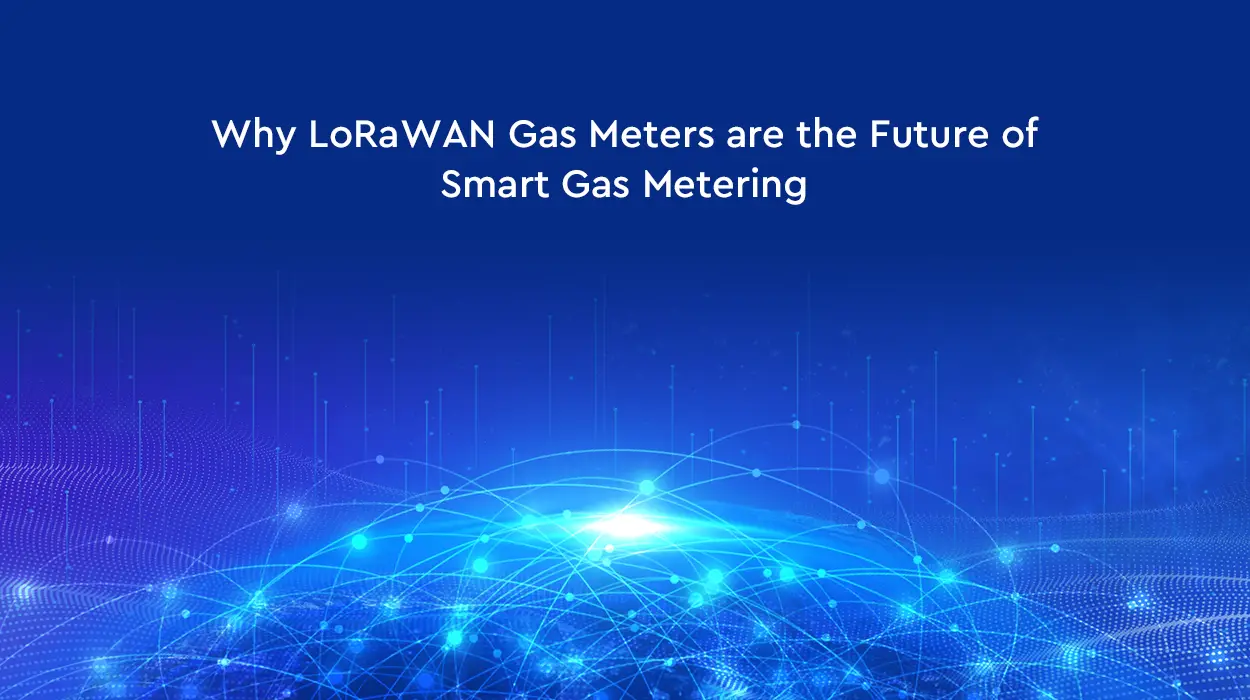Smart gas metering is an essential component of smart city infrastructure. It enables gas companies and utilities to monitor and manage gas usage more efficiently, while also providing customers with accurate billing information. As demand for smart gas metering technology grows, LoRaWAN gas meters are quickly gaining traction in cities around the world. In this blog, we will explore what LoRaWAN gas meters are, their advantages, how they compare to other smart gas metering technologies, and their benefits in smart cities.
What are LoRaWAN gas meters
LoRaWAN gas meters are part of a family of smart meters that use low-power, long-range wireless communication technology called LoRaWAN to transmit gas consumption data from the meter to the utility company. It works by using ultrasonic sensors to measure the flow of gas through the meter, and then transmitting that data to a gateway device using LoRaWAN technology. The gateway device, in turn, sends the data to the utility company for billing and analysis.
Advantages of LoRaWAN gas meters
LoRaWAN gas meters offer many advantages over traditional gas meters due to its IoT capabilities. With these advantages, LoRaWAN gas meters are becoming a popular choice for gas metering and monitoring, providing users with an efficient, secure, and cost-effective solution.

Long-distance capability: One of the main advantages of LoRaWAN-enabled gas meters is their long-distance capability. They can operate through thick walls and behind metal barriers, making them perfect for use in cities, including large apartment complexes, industrial estates, and shopping malls, as well as in rural areas.
Low power consumption: Gas meters equipped with LoRaWAN technology are optimized to utilize minimal power, allowing them to function for extended periods. It’s ideal for remote locations where changing batteries can be challenging and expensive.
Secure data transmission: LoRaWAN technology uses end-to-end encryption to ensure that data is transmitted securely. Moreover, sensitive information about gas usage or customer details is never compromised.
Easy to deploy and maintain: LoRaWAN gas meters are easy to install, even in areas with challenging terrain. Once installed, they require minimal maintenance, which means lower maintenance costs and time.
Compatibility with existing infrastructure: LoRaWAN gas meters integrate well with existing gas infrastructure. This is a cost-effective solution for gas utilities and provides real-time monitoring of gas usage.
Cost-effective solution: LoRaWAN gas meters are affordable and cost-effective for both residential and industrial users seeking reliable gas monitoring solutions. These meters are user-friendly, easy to install and maintain, and support real-time monitoring to optimize usage and minimize costs.
Other technologies used in smart gas metering
Smart metering is the new buzz in town, and it’s no wonder why. The global smart meter market is expected to reach $13.7B by 2024, with a CAGR of 6%. The fast adoption of LPWAN has driven growth in gas and water smart metering projects. Advanced metering infrastructure, NB-IoT, and Sigfox are some of the varied technologies introduced to enable electronic gas usage monitoring.

AMI (Advanced Metering Infrastructure)
The AMI system facilitates communication between utility companies and customers through smart meters, enabling remote reading, monitoring, and real-time data access. This two-way communication system eliminates manual reading, enhances data accuracy, and offers advantages to both parties like managing usage and detecting leaks in real-time.
NB-IoT (Narrowband Internet of Things)
NB-IoT is a cellular network technology that connects devices to the internet, ideal for smart gas metering. It provides long battery life, deep indoor penetration, and extensive coverage, allowing utility companies to monitor gas meters remotely, detect leaks, and schedule maintenance more efficiently, especially in remote areas.
Sigfox
Sigfox is an energy-efficient LPWAN technology designed for IoT devices with long-range communication capabilities. It enables remote monitoring of gas meters, detecting leaks in real-time and providing gas consumption data. Sigfox is better suited for use in cities, with low cost communication coverage over shorter distances, using ISM radio frequencies.
Why choose LoRa for smart gas network
Gas metering is one area where LoRa can be particularly useful, and we have already mentioned some of the advantages of loRaWAN gas meters above. Comparing LoRaWAN gas meters with other smart gas meter technologies, we can see that LoRaWAN offers a long-range capability, low power consumption, and secure data transmission that other technologies lack.
- Long range communication capability: LoRaWAN has a range of up to 10 kilometers in open areas and up to 3 kilometers in urban environments, which is much farther than LPWAN technologies like NB-IoT and Sigfox. This means fewer gateways are needed to cover a large area, making it a cost-effective solution for gas metering.
- Low power consumption: LoRaWAN devices can operate on batteries for up to 10 years, depending on the frequency of data transmission, making it a more sustainable option compared to AMI and NB-IoT.
- Deep penetration: LoRaWAN’s ability to penetrate deep into buildings is another significant advantage over other LPWAN technologies, especially in dense urban areas.
According to the LoRa Alliance, LoRaWAN’s proven performance and scalability make it the technology of choice for gas metering applications worldwide. As the global market for smart gas meters continues to grow, LoRa technology is expected to play a key role in driving this growth forward.
LoRaWAN gas meters in smart cities
LoRaWAN gas meters have emerged as an innovative and efficient technology for managing gas consumption in smart cities. Here are some benefits of LoRaWAN gas meters for utilities and gas companies, city governments and residents:
Benefits for utilities and gas companies
- Accurate Reading: LoRaWAN gas meters offer high accuracy, reducing the need for manual reading, and providing real-time consumption data, allowing companies to manage their resources more efficiently.
- Remote Management: LoRaWAN gas meters can be remotely managed, reducing the need for on-site maintenance and repair. This feature helps to save time and reduce costs.
- Better Resource Planning: With real-time consumption data, companies can better plan their resources and optimize their operations. It also helps them to detect leaks or other malfunctions faster, reducing the risk of safety hazards.
Benefits for city governments and residents
- Energy Efficiency: LoRaWAN gas meters provide real-time consumption data to both the gas company and the consumer, allowing them to monitor their usage and take steps to conserve energy, reducing costs and carbon footprint.
- Cost-Effective: With LoRaWAN gas meters, residents are only billed for the amount of gas they consume, ensuring a fair and transparent billing system.
- Improved Safety: LoRaWAN gas meters help to identify gas leaks and other safety hazards, ensuring a safer living environment for residents.
Use cases for smart LoRaWAN gas metering
With an eye towards environmentally-friendly alternatives to gas consumption, tighter controls are being implemented. NATO has set ambitious goals of reducing emissions by 45% by 2030 and becoming carbon neutral by 2050. As more cities and regions adopt LoRaWAN technology for gas metering, it is optimistic to reduce carbon footprints and see significant benefits in the years to come.
Midsoft and Actility deploy LoRaWAN gas metering in Eskişehir organized Industrial zone
Actility and Midsoft have partnered to deploy a large IoT project in Turkey’s Eskişehir Organized Industrial Zone, beginning with gas-usage monitoring. Midsoft will build a private LoRaWAN network of 32 km² using Actility’s ThingPark Enterprise IoT platform to accelerate digital transformation with LoRaWAN technology. The LoRaWAN smart metering system provides real-time tracking of gas consumption, leak detection, and remote metering reading. The project resulted in improved efficiency, billing accuracy, and response to gas outages, benefiting both the utility company and consumers.
Semtech partners with Spanish Arson Metering, providing utility metering systems
Semtech partners with Arson Metering for a smart gas metering sensor solution that uses LoRa devices and the LoRaWAN standard. The solution detects dangerous methane levels, sends notifications wirelessly to a mobile device, and shuts off gas supply instantly. LoRaWAN’s adaptability securely accommodates the various protocols required by different gas meters, including sensors for methane and carbon monoxide. Nortegas validated LoRaWAN’s reliability by offering a mobile app to notify customers about excessive methane concentrations.
Conclusion
Overall, the use of LoRaWAN technology in smart gas metering has numerous benefits for utilities, municipalities, and consumers. As the global smart meter market continues to grow, we can expect more companies and regions to embrace this technology. Whether it’s for electricity, gas, or water, LoRaWAN’s adaptability and simplicity make it versatile and ensure utilities have the necessary connectivity for their operations, regardless of what the future holds.










